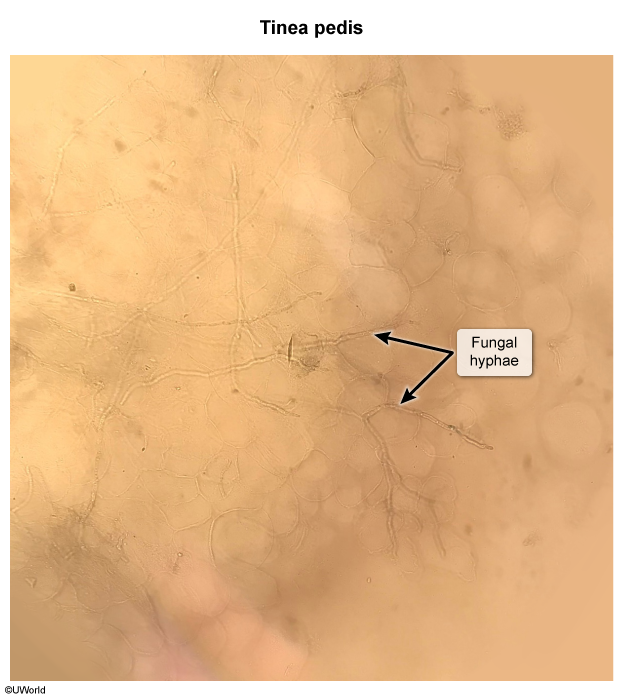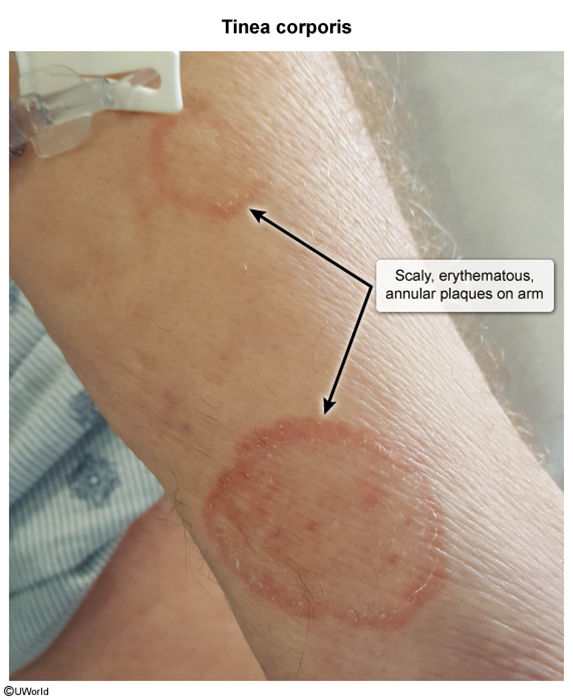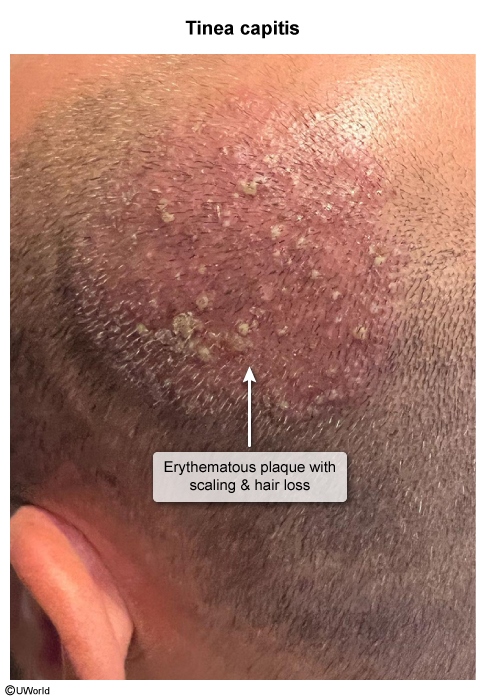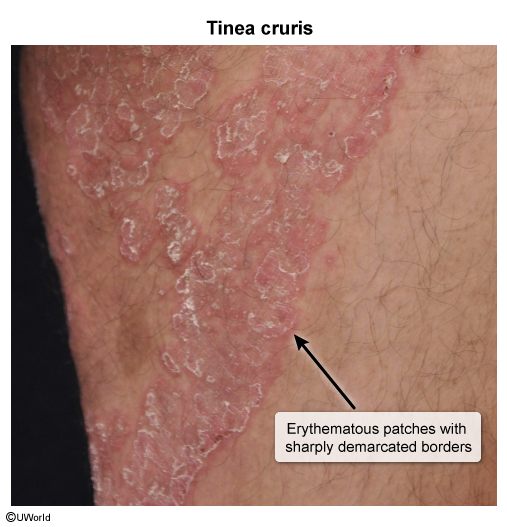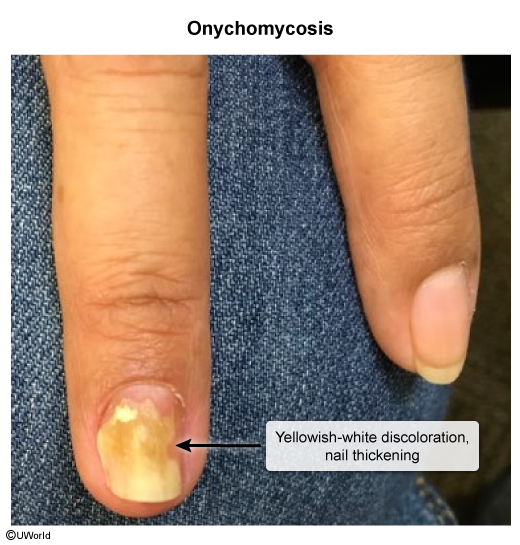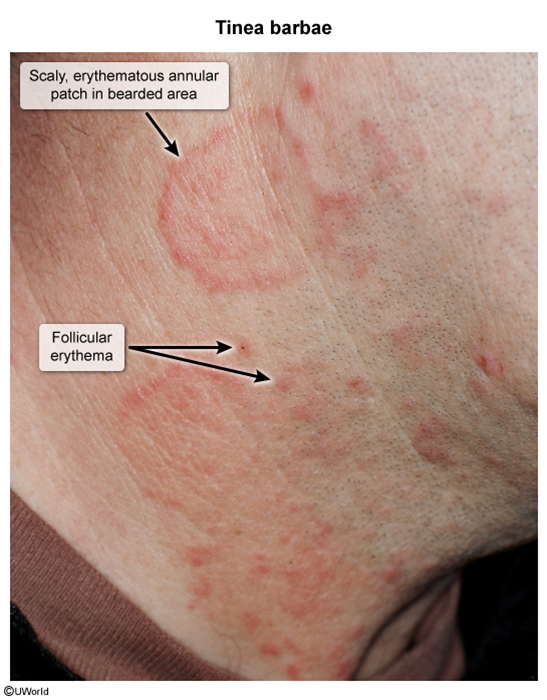Dermatophyte (Tinea) Infections
Article Sections
Introduction
Dermatophyte infections are a group of common superficial fungal infections caused primarily by filamentous fungi of the Trichophyton (eg, Trichophyton rubrum), Epidermophyton, and Microsporum genera. These disorders, also known as tinea infections, are categorized primarily by location, and include:
- Tinea corporis (body), also called ringworm
- Tinea capitis (scalp)
- Tinea pedis (foot)
- Tinea cruris (groin), also called jock itch
- Tinea unguium (nails), also called onychomycosis
- Tinea barbae (beard area)
Pathophysiology
Dermatophyte organisms are ubiquitous, occurring in both indoor and outdoor environments. Transmission readily occurs through direct contact with soil, contaminated surfaces, or infected animals or people or via fomites (eg, shared combs for tinea capitis). Autoinoculation (eg, from a different body site) also occurs.
Dermatophytes produce keratinases that break down keratin, allowing the fungi to invade and proliferate in keratinized tissues such as skin, hair, and nails. The infection typically remains localized to the stratum corneum, rarely penetrating the dermis or subcutaneous tissues. Disruption of the normal keratin structure leads to the characteristic scaling and flaking seen in these disorders. The immune response to the fungal antigens contributes to the inflammation and bothersome symptoms (eg, pruritus) observed in dermatophyte infections.
Continue Learning with UWorld
Get the full Dermatophyte (Tinea) Infections article plus rich visuals, real-world cases, and in-depth insights from medical experts, all available through the UWorld Medical Library.
Images
